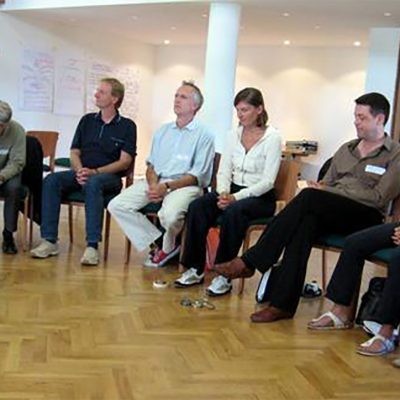
What might you do if you have a project and despite your best efforts, despite excellent leadership and terrific people on the team, the project is in trouble?
Project management is a science unto itself. Within this science, there are ways to bring a project back into line if it is running into difficulty. Sometimes that is enough. Sometimes it is not.
As a consultant, when I am in this situation, I do not go into the science of project management for my path forward. Rather, I go into the science and practice of organizational transformation and tap into what I know about organizational change. A project by the limitations of a fixed length of time for completion, when in difficulties, cannot take the time to go through a change process that is slow. It requires fast, transformative change. It requires a project turnaround.
Let us think about what makes up an organization. An organization forms as soon as two or more people come together around a common purpose. Components of an organization include that purpose, getting on with the business of leadership, having a shared vision, or at least shared expected outcomes, maybe including others, and then figuring out how it all needs to be managed.
To get on with a project turnaround when a project is in difficulty, making this shift in perspective to understanding that a project is an organization and requires an organizational development process is an important first step.
A second important step is to make a shift away from the concept of management, and think instead of leadership. This requires an understanding of what the late Stephen Covey taught, that we lead people, we do not manage people. We manage systems and resources.
Now, it is possible to approach the project turnaround from a perspective of Organizational Leadership rather than Project Management. This shift creates greater space for possibility thinking. There is less emphasis on ‘how will we manage to accomplish our goals?’. An emphasis returns to what is required to lead people.
A Shift in Perspective Essential for Project Turnaround
I was contacted by a Director in a global health organization. A five year project was not going well and it was year three. She said that she had a great staff of 80 people. She also said that the project, with the resources available, could have accomplished the project goals within the five year time frame. A few of the leadership staff had been present at the time of setting the project goals, objectives, targets and milestones and thus in putting forward the proposal that got the project approved and funded. The staff understood their job roles. It was clear to me as she spoke that she had a good project management approach. I could understand why she was baffled about what to do to turn the project around so that it could accomplish its outcomes.
I asked her if she was open to expanding her perspective to think of the project as an organization, requiring attention to the components necessary for organizational development, not only project management. She answered that she was open and yet also dubious because in her perspective, this was not an organization…it was a time limited project. I asked her to imagine with me that an organization forms when two or more people come together around a common purpose. After some discussion, she agreed to continue on with me from the perspective that her role was as a leader of an organization, albeit a time limited one.
This shift in perspective of her own role already made a difference in what she was thinking about and questioning. She understood that this shift created greater space for possibility thinking. She was interested in continuing our discussion about emphasizing her own role from a perspective of ‘what do I need to consider in my role of leading people and leading this organization?’. She said it felt a lot different than when she placed her emphasis on ‘how will we manage to accomplish our goals?’. She knew without doubt that the goals needed to be accomplished. The shift was in what she would emphasize from her leadership role to get to the desired outcomes.
Within a short time, under her leadership, the team regrouped to perceive themselves as an organization, also making the shift from project management. With our facilitation help, they quickly developed clarity about the purpose of their organization; the leadership approach needed; a shared vision of the desired goals, and they agreed on strategies for accomplishing the goals.
Within the discussion of leadership approach, the Director realized that she needed to go back to headquarters to get clarity on her own mandate, specifically to clarify her own authority. In turn, the staff were hungry for clarity about their own authority to get the job done, willing to engage in leadership themselves to accomplish the outcomes if they only knew what authority they had to do so.
Two years later, the project had met all of its outcomes, staff morale remained high until the end of the project, and reviewers said that they had exceeded expectations.
Your Shift in Perspective for Project Turnaround
Can you see how this simple shift in perspective – that a project is an organization and therefore success is enhanced through an organizational development process and that there needs to be particular focus on leading people throughout the scope of the project rather than managing people – can help a project to be more successful? Or to turn around a project that is experiencing difficulty in achieving its goals? Share your insights in a comment below.
Photo Credit: Willie Cloete | FreeImages.com










Leave a Reply
You must be logged in to post a comment.